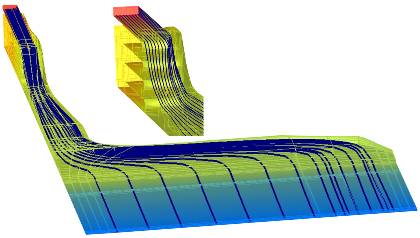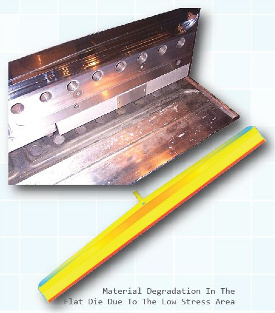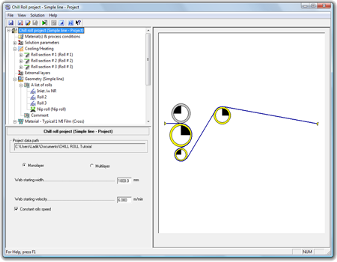COMPUPLAST® Virtual Extrusion Laboratory™ - Cast Film Extrusion
The COMPUPLAST® Cast Film Extrusion Package™ can help the user visualize the material behavior anywhere inside a cast film process. This package can be used to simulate the components of virtually any cast film extrusion line configuration including the production of coextruded cast film to help troubleshoot and optimize the process. It can be used to study the effect of changes in processing conditions, materials and equipment design.
The package can be used to evaluate existing equipment or engineer new designs. The results not only include the flow distribution but also the shear stresses that may result in material stagnation inside the die and/or poor surface quality at the die exit.
Problems like interfacial instabilities in coextrusion can also be solved.
With the Cast Film Extrusion Package™, the user can avoid many problems due to improper equipment design and also reduce the number of physical experiments when developing a new product.
The applicable VEL™ Modules are:


The VEL™ for Cast Film Extrusion has been developed with the extrusion process engineer in mind. These modules can be used to help:
- Optimize Screw Designs
- Optimize Flow Channel
- Optimize Mono or Coex Die Design
- Optimize Chill Roll Configuration
The versatility and ease of use have truly made the COMPUPLAST™ VEL™ a valuable CAE tool.
The Virtual Extrusion Laboratory™ for Cast Film Extrusion is also a very useful and powerful tool for assisting with material selection for product/structure development and process troubleshooting on existing lines. The modules can be used to help:
- Optimize Material Selection
- Optimize CoexStructures
- Troubleshoot Process Problems
- Minimize Down Time
- Maximize Production
The Cast Film Products Extrusion Package can help
the user understand/solve the following
problems:
- unbalanced/uneven flow at the die exit
- poor surface quality
- material degradation inside the die and slow purging/color change
- instabilities in coextrusion
- poor feed-block design
- problems related to the extruder performance such as surging, material overheating, material degradation and burning
